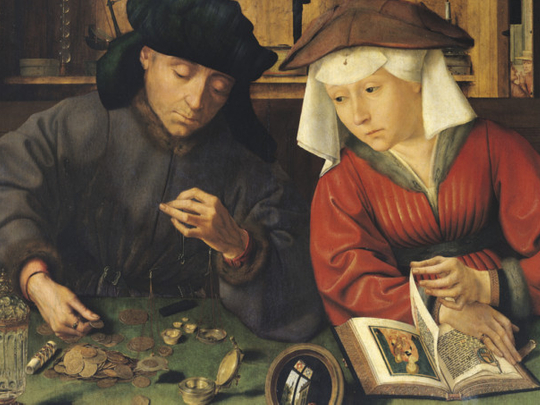
Bad news with respect to the European debt crisis seemed to be incessant over the past couple of weeks. Spain is now facing 57 per cent youth unemployment; Greece’s debt-to-GDP ratio has reached a whopping 190 per cent; Slovenia seems to be the next country that will fall like a domino; and German imports fell sharply in February, for the third time in four months while exports also declined, suggesting that even the eurozone’s largest economy cannot be relied upon to help lift the currency bloc out of recession.
So far, EU members in central and northern Europe have been seen as relatively resilient to the economic mess that came with the euro crisis, apart from Germany, Austria, the Scandinavian countries and Benelux — Belgium, the Netherlands and Luxembourg. However, the persistent recession is also beginning to take its toll on more stable countries, among them the Netherlands.
Viewed from the outside, the country has always been one of the most competitive countries in the European Union, with large multinational corporations such as ING, Royal Dutch Shell, ABN Amro, Philips, Heineken and Unilever. The Netherlands, with a nominal GDP per capita of around $50,200 (Dh184,331) in 2012, is richer than Germany, Japan, Singapore, the UAE and France, and among the top 15 richest nations globally.
Generous loans
The country experienced its heyday in the late 1980s and 1990s, when the banking industry in particular took off and started pumping billions in loans into the private and commercial real estate market, often granting loans at more than 100 per cent of the property value (purchase price and additional cash for renovation etc.). People could lend up to five times their annual salary, coupled with generous tax incentives.
“We all had favourable labour contracts due to the strong unions and everybody, being in employment, was considered safe and reliable borrowers,” says Chris van Saanen, a retiree who chose Thailand as his new domicile after leaving the Netherlands at age 50.
The effect was that house prices as well as rents soared, making Dutch cities such as Amsterdam, Rotterdam and Groningen some of the most expensive places for property in Europe. This continued, with average annual GDP growth rates of 4 per cent, until the Netherlands joined the eurozone in 2002.
Adds Van Saanen: “We felt there was no end to the upturn. People who bought houses on loans took more loans to invest in fixed income funds, expecting to pay off their debt in a kind of financial perpetuum mobile.”
In the wake of the global slowdown after the turn of the millennium, the Netherlands slowly began to face a slump in its economic dynamics, resulting in a GDP decline of 0.7 per cent in 2011 and 0.5 per cent last year. It suddenly became clear that the Dutch economy was sitting on a ticking time bomb.
According to Dutch Finance Minister Jeroen Dijsselbloem in his budget speech for this year, the country has fully fallen prey to the euro crisis and now faces a debt mountain of $650 billion, just in consumer loans from banks. The debt has reached about 250 per cent of available income, which is double the ratio of Spain.
The result was that banks reined in their lending, causing the property market to stall and private consumption to slow down. Unemployment is on the rise, and the GDP growth has turned negative. Property prices are in free fall as people cannot repay their debts, and many are desperately seeking to sell.
Frugal living
Van Saanen sold his house in Utrecht two years ago for 70 per cent of the price he had paid in 1995, barely avoiding foreclosure. He used the proceeds and his end-of-service allowances to pay off the loan balance, and with his remaining meagre savings and pension left the Netherlands for Thailand in 2011, as soon as he turned 50 and was eligible for a retirement visa.
“I was forced to do what I call geo-arbitraging: To continue living in a cheaper country with the remaining means I’ve left from having lived in a rich country whose economy turned sour,” he says.
He now lives the frugal lifestyle of the growing number of elderly European expats who are trying to escape the euro crisis in Southeast Asia, on about €500 (about Dh2,400) per month, about enough for a small room, daily street food and a few beverages from time to time.
Dijsselbloem has announced tough austerity measures for this year, including a cap for new borrowing at 3 per cent of GDP, a reform of the tax loopholes and cuts in public services and health care. The measures should bring about $46 billion in public savings. This, however, would still not be enough to remain within the eurozone debt limit.
“The problem for the Dutch government is that more than 80 per cent of mortgages are guaranteed through the Nationale Hypotheek Garantie, the National Mortgage Guarantee,” says ING analyst, Carsten Brzeski. “So everyone is looking to the government to save them as soon as their house prices start falling, which increases the pressure on fiscal policy even more.”
It’s too early to speculate whether the Netherlands is transforming into a fully crisis-ridden state, but a vicious cycle has already begun and is showing quite plainly what it means for a country that has lived beyond its means. The unemployment rate, which used to be below 4 per cent in better years, has risen to above 7 per cent and is climbing further.
Economists expect a further contraction of the Dutch economy by 0.5 per cent this year. Bankruptcies have reached the highest number since records began in 1981, and the banking sector is forced to lay off thousands of employees. Van Saanen was one of them.









